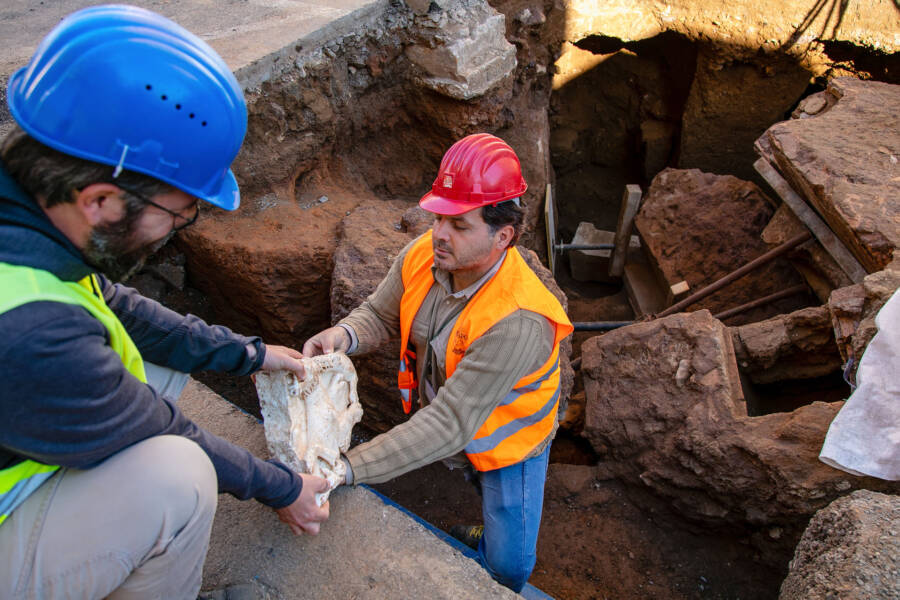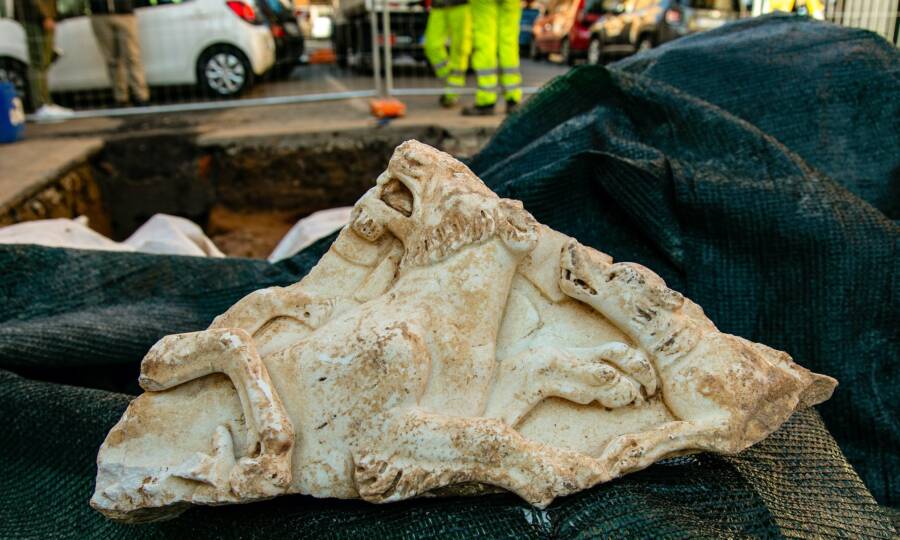Though almost 2,000 years old, the white marble altar is well-preserved and its mournful inscription clearly legible.
grieve for lost know ones is a recitation as old as time . This dot was poignantly made by the breakthrough in Rome of a funerary altar for a young lady friend — who died 1,900 twelvemonth ago at the years of 13 .
Workers along Via Luigi Tosti in Confederacy - central Rome made the find while dig up water pipes near the necropolis of Via Latina . According to theJerusalem Post , they came across the “ very well - keep ” white marble communion table about six and a half foot beneath the road ’s airfoil .
Resembling a modern - day gravestone , the funerary altar clearly translate in large block missive : “ Valeria PF Laeta vixit annis XIII m VII , ” which translates as “ Valeria Laeta daughter of P(ublio ) lived 13 years and 7 month . ”

Fabio CaricchiaThe 1,900 white marble altar is well-preserved with Valeria’s name clearly visible.
Fabio CaricchiaThe 1,900 livid marble altar is well - preserved with Valeria ’s name distinctly seeable .
According toArkeonews , the funerary altar also let in a bas - relief embellish with songster , a field goal that seems to include grapes or yield , and acanthus leave . Arkeonews notes that motifs like these were “ vulgar ” in Greco - Roman times and often adorned temples or altars .
However , the funerary altar was n’t the only matter that workers find oneself beneath Via Luigi Tosti . In add-on , they uncovered the remains of a larger social organization that likely housed urn and the box of a sarcophagus that depicts a lioness being hunted by a weenie and horse .

Soprintendenza Speciale Roma/FacebookArcheologists work to remove the 2nd-century marble fragments from beneath the road.
“ This is an arena full of tombs go steady from papist multiplication and it ’s potential these remains all belong to one loaded family , ” Angelina De Laurenzi , the archaeologist who directed the digging , toldThe Times .
Soprintendenza Speciale Roma / FacebookArcheologists work to remove the 2nd - century marble fragments from beneath the road .
The body structure itself , call a dovecote , was probably made out of porous limestone called tuff , agree toThe Daily Advent , which was covered with brick . archaeologist suspect that it was purposefully destroy almost 100 years ago by Benito Mussolini , who assay to modernize the metropolis .

Soprintendenza Speciale Roma/FacebookThe excavation also turned up the white marble corner of a sarcophagus, which appears to depict a hunting scene.
“ The construction appeared to be heavy damaged , ” theSpecial Superintendency of Rome , who superintend the archeological site , noted on Facebook . “ [ P]erhaps by the urbanisation interventions in the 1930s . ”
According toNational Geographic , the funerary bodily structure was part of a necropolis that ran parallel to the Via Latina , an important route that link Rome with Capua , near present - day Naples .
“ The Romans used to bury their dead on the outskirts of the city , ” National Geographic promissory note , “ since among the oldest laws of Rome was the proscription of burials within the pomerium , the hallowed limit of a city . ”
Soprintendenza Speciale Roma / FacebookThe excavation also turned up the white marble corner of a sarcophagus , which appears to depict a hunt scene .
For now , not much is known about Valeria Laeta herself , the young girl laid to rest some 1,900 years ago . Evidently , she was well - loved — and her family want to cherish her memory . But though she had just 13 years and seven month on earth , her life — and end — has left present-day observers of her detailed funerary Lord’s table in awe .
“ Meraviglia ! ” several commenters write on the Special Superintendency of Rome ’s Facebook varlet , which roughly translates to “ a admiration ! ” or “ a wonder ! ” Another write , “ What a dish ! awesome , give thanks you . ” And one touchingly commented : “ life-time is so ephemeral ! What a find . ”
After translate about the funerary altar for a teen girl strike in Rome , see how gutter worker in the metropolis discovered a“pomerium ” stone marking ancient Rome ’s boundaries . Or , see about the sensational fourteenth - centurysarcophagus unwrap beneath Notre Dame .